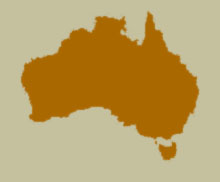Synonyms
Orcus punctulatus Blackburn, 1892: 24o.
Diagnosis
The bluish dorsal coloration in combination with a well developed elytral bead and vestigial hypomeral fovea distinguish this species from the other Australian Orcus.
Description
Length 3.8-4.7 mm. Dorsal surface bluish or greenish, usually shiny; venter pale brown except epipleura and hypomera, which are dark brownish to somewhat purple in some specimens. Body rounded, convex. Head micro reticulate between punctures; punctation about as large as eye facets, shallow and sparse, nearly 2 diameters apart. Eyes with inner margin slightly diverging apically. Antenna 9-segmented very similar to O. lafertei. Terminal maxillary palpomere with sides nearly parallel; the apex moderately oblique with outer side about 1.5 times longer than wide; terminal labial palpomere slightly elongate; about 2 times longer than basal width; slightly shorter than preceding segment. Pronotal surface micro sculptured between punctures; the sculptures somewhat different and much weaker than in head, rugose on disc and reticulate on anterior angles; punctation about as large as eye facets, as shallow as on head, approximately 1.5 to 2 diameters apart; the punctures not confluent on anterior angles, getting only deeper and sparser; anterior angles without distinct strigae; lateral borders slightly oblique; bordering line interrupted at base, the line visibly bordering the entire lateral border in some specimens; prosternum very long in front of coxae, about 2 times the prosternal process widest width; hypomeral foveae vestigial; hind tibiae with outer tooth; tarsal claws distinctly appendiculate. Elytral surface sculptured as on pronotum; punctation more conspicuous than on pronotum; slightly deeper and sparser; lateral margin slightly reflexed; with clear bead; epipleural foveae conspicuous. Abdomen with 5 ventrites; 5th rounded at apex, somewhat oval; surface of ventrite 1 polished between postcoxal lines; postcoxal lines joined at middle, running parallel to posterior margin of ventrite; apical border of intercoxal process conspicuously swollen.
Male
Tegmen relatively short, slightly longer than 1/2 the abdomen length; penis guide symmetrical, slightly longer than parameres; parameres densely setose at apex, strut as long as tegmen; penis as in O. lafertei.
Female
Female externally identical to male.
Variation
Unknown.
 Distribution and Biology
Distribution and Biology
Widely distributed in northern parts of Australia and New Guinea.
Species References
Blackburn, T. 1892. Further notes on Australian Coleoptera, with descriptions of new genera and species. XII. Transactions of the Royal Society of South Australia, 15: 207-361.
Slipinski, S.A. 2007. Australian Ladybird Beetles (Coleoptera: Coccinellidae) their biology and classification. ABRS, Canberra. 286 pp.
Slipinski, A. and Giorgi, J.A. 2006. Revision of the Australian Coccinellidae (Coccinellidae). Part 6. Tribe Chilocorini. Annales Zoologici (Warszawa), 56(2): 265-304.
[ Top ]
